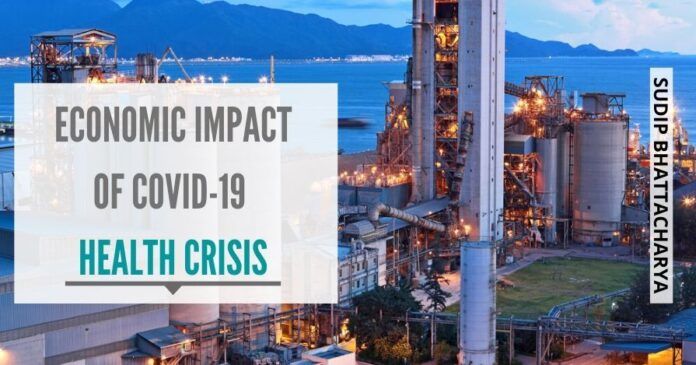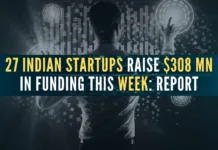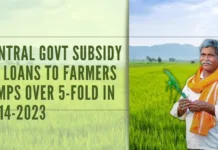
China’s loss in manufacturing could be India’s gain and India could lure Japanese companies
India’s stock market has dipped 33% since the beginning of 2020, more than any other significant market. Private equity and venture capital investments, which were already down 20 to 40% during the March quarter, are expected to come to a grinding halt in the June quarter. GDP growth is set to fall to its lowest level for 40 years and job losses could run into the tens of millions, putting many at risk of hunger. In India, the growth is estimated to plummet to 2.1 percent in the current fiscal. In its ‘South Asia Economic Update: Impact of COVID-19’, the World Bank estimated the Indian economy to decelerate to 5 percent in 2020 and projected a sharp growth deceleration in fiscal 2021 to 2.8 percent. Not surprising considering that exports have almost stopped.
The only redeeming feature is that oil prices have fallen more than half. That would somewhat ease pressure on the fiscal deficit front. Further, China’s loss in manufacturing could be India’s gain and India could lure Japanese companies being pushed by Tokyo with a $2.2 bn incentive to relocate from China.
India’s finance ministry announced a 1.7 trillion ($22 billion) economic stimulus package that will include delivering grains and lentil rations for three months to 800 million people, some 60% of the world’s second-most populous country.
At least 30 countries have approached India for supplies of hydroxychloroquine to fight COVID-19. Over the years, India has emerged as a major supplier of inexpensive generic drugs. The current crisis offers it a chance to use this as a soft power to cement its position in the world order and negotiate favorable deals.
The US economy has been estimated to contract by 4 percent in the first quarter of 2020 and as much as 14 percent in the second, while the economies of the 19 Eurozone countries are predicted to shrink by 15 percent in the first quarter and 22 percent in the second.
All this is despite the announcement of a fiscal stimulus of over 10% of GDP in the USA and more than 15% in the UK and Germany. India’s finance ministry announced a 1.7 trillion ($22 billion) economic stimulus package that will include delivering grains and lentil rations for three months to 800 million people, some 60% of the world’s second-most populous country.
There have been earlier quite a few independent economic crises and in all of them, recovery happened within a span of 6 to 18 months. But this is a case of universal health crisis leading to a global economic recession. This has given a tremendous shake to the global economic system and unless and until the health crises get over, things are going to worsen.
History serves a warning: the 1918 Spanish Flue pandemic, the worst health crisis until this one, hit in 3 waves before finally being contained.
Global leaders are urgently mapping out plans to loosen lockdowns and to begin rebooting their economies even as the Coronavirus pandemic still rages across the globe. Unfortunately, there is no master plan existing and restarting manufacturing is going to be difficult, as the labour force will be forced to choose between fear of life and livelihood. Further, the lockdowns will have to be gradually relaxed without triggering a second wave of infections that lead to a fresh round of lockdowns and yet more economic damage. History serves a warning: the 1918 Spanish Flue pandemic, the worst health crisis until this one, hit in 3 waves before finally being contained.
To prepare to tackle the gradual reopening of the world’s shattered economy, the stakes could scarcely be higher and the trade-offs more unsettling. With planes grounded, supply chains ruptured and factories idled, the $90 trillion world economy is enduring one of its worst shocks since the Great Depression.
In India, officials say that it is crucial to restarting production as supplies run low and therefore the Industry dept seeks opening up 16 manufacturing segments including food and beverages, automobiles, steel and cement, plastics, paints, and exports. It is a tough decision for the govt. but we will soon come to know.
Note:
1. The views expressed here are those of the author and do not necessarily represent or reflect the views of PGurus.
- The real Parivartan is to be ushered in now. - March 23, 2021
- When will the truth dawn on Bengalis? - March 13, 2021
- The many arguments of anti-Modi intellectuals - November 5, 2020










